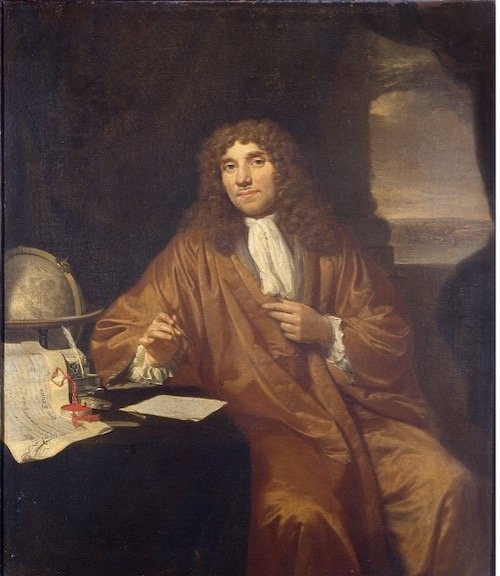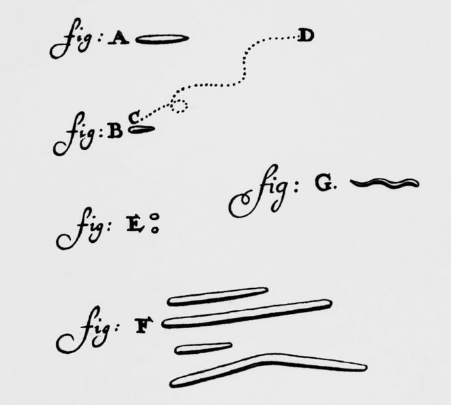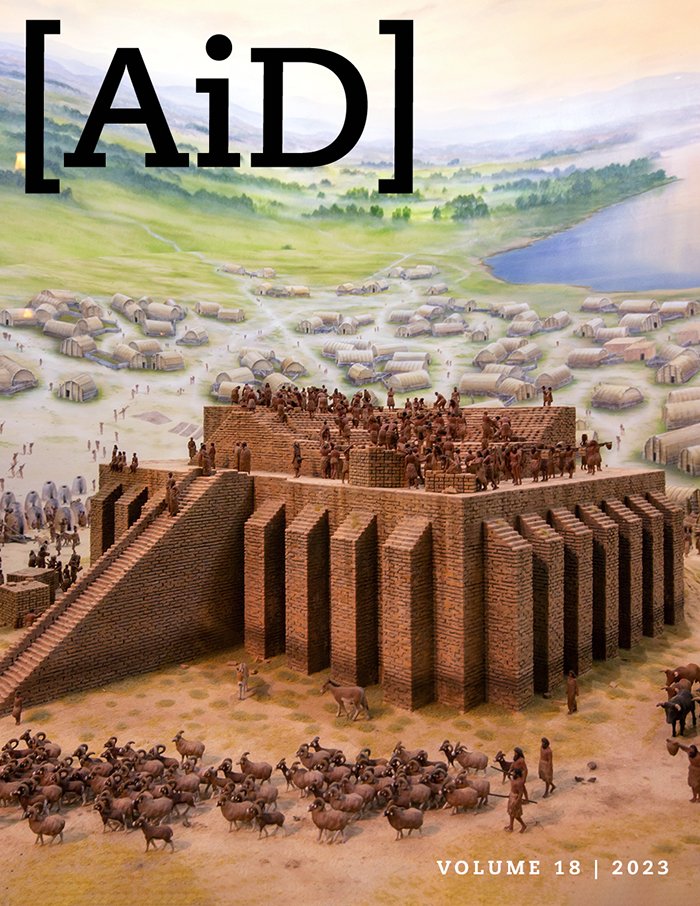
Celebrating Leeuwenhoek’s Life 300 Years Later
Antony van Leeuwenhoek: 1632–1723
Abstract
Antony van Leeuwenhoek entered eternity 300 years ago (August 26, 1723). He made hundreds of discoveries with his simple microscope. Perhaps his most notable discovery was of bacteria and its many shapes. He found great joy in God’s smallest creatures. I believe that his curiosity about the world, fueled by his belief in biblical creation, led to his discovery of bacteria. In a similar manner, his curiosity of blood led to his discovery of red corpuscles and capillaries. He remained a curious man until the last days of his life 300 years ago today. His curiosity of life in rainwater, lake water, and “pepper water” led to many discoveries. He first discovered bacteria and protozoans in drops of water. A Dutch haberdasher (i.e., draper, cloth merchant), he retained a childlike joy of discovery from his youth until his death at age 91.
Over ten years ago, I published an article (Gillen and Oliver 2012) on Leeuwenhoek that has been popular based on the total number of downloads. This article seeks to expand on Leeuwenhoek’s discovery of bacteria and its three shapes nearly 350 years ago. These discoveries were a turning point in the history of biology and in medicine. It was a milestone in microbiology.
Timeline to Discovery
- 1673: 350 years ago, Leeuwenhoek’s first letter was written to the Royal Society about the stings of bees as he saw them under the microscope
- 1674: First letters to Royal Society: specimens had bacteria that look like Staphylococcus aureus
- 1675: Observations of water with animalcules
- 1676: Letter with observations of Spirilla volutans
- 1677: Bacteria discovered by Leeuwenhoek?
- 1677: Leeuwenhoek’s paper, the famous “letter on the protozoa,” gives the first detailed description of protists and bacteria living in a range of environments.
- 1683: Letter with observations of scrapings from teeth; the first detailed drawings of bacteria and their shapes; Discovery of bacteria and other achievements
From the many letters of Leeuwenhoek that followed his first one in 1673 concerning molds, it is a bit difficult to say exactly when he first saw bacteria. But in 1674, he began to write about his studies on protozoa, and the following year (mid-September 1675), he observed several kinds in rainwater, canal water, and in infusions of pepper and other spices. By that time, he had perfected his microscopes and techniques, but he never revealed the methods used for making his best observations. On October 9, 1676, Leeuwenhoek sent Letter 18 to the Royal Society of London with his findings.
Dobell’s translations of other letters indicate that he may have seen bacteria (Spirillum volutans) as early as summer 1675 and probably bacteria in rainwater by mid-September 1675 (Cohen 1932, 31). In the history of science and medicine, it was officially reported in Letter 18. This letter (October 9, 1676) has been described as “a most significant event was the reported the discovery of bacteria.” In the same notable letter on “animalcules” in the experiment, involving pepper grains in water, Leeuwenhoek described more bacteria (published in 1676). In 1683, he published another letter with the first clear bacteria drawings showing clearly that he saw bacteria and in three shapes (Dobell 1932). For these discoveries, he rightly deserves the title Father of Bacteriology. This brief article seeks to focus a creation lens on Leeuwenhoek and bring relevance to a world that better understands microbiology in the modern age. The discovery of bacteria and microbes is considered a major advancement in medicine, due to Leeuwenhoek, who invented a microscope that had high resolution. This enabled him to see and describe undiscovered life-forms as well as the shapes of cocci, bacilli, and spirochetes (Fig. 1, Dobell 1932).
Introduction
Antony van Leeuwenhoek originally developed a refined simple microscope to see the threads of fabric for his draper-haberdasher trade. He had an insatiable curiosity for small things and had great skill in grinding lenses. In his spare time, he was very inquisitive and always wanted to learn. He wanted to examine drops of water to see what lived there. Imagine you were looking at life in a drop of water and saw things that no one else had described. Many life-forms that were swimming were 10,000 times smaller than a grain of sand or anything that had been described before. Words had to be invented (or coined) to describe the previously invisible life in water and nature. Antony used the word diertgens (later translated animalcules or little animals).
Antony had a calling like Adam’s in the naming the animals and plants. Antony would describe, draw, and employ a draftsman to refine his sketches before writing a letter to the oldest scientific journal (Philosophical Transactions of the Royal Society of London) in the world in 1674. Though he sampled from a small lake, he had big discoveries of protozoa and bacteria! In his lifetime, Antony wrote about 200 letters, or epistles (the term Dobell, 1932, used), to describe his curious findings.
Merchant to Microbiologist
In 1632, he was born in South Holland. As a young adult, he was a cloth merchant who wanted to produce the finest clothes with high thread counts. He learned to grind skillfully to see the threads and fabrics in a refined manner. His curiosity for living things came after viewing the pictures of fleas that Robert Hooke drew. In 1668, he started his biological study as a hobby after seeing beautiful microscopic pictures while making a visit to London. The simple microscopes to see thread woven designs in his trade now changed to seeing living creatures. After years of careful study, Leeuwenhoek made the microscope famous with bacteria, protozoans, body tissues, and blood circulation. Given his high regard for Scripture, he probably gave glory to the Master Craftsman who wove the human body together.
He was in awe of God’s creation and wanted to study it to observe, experiment, and understand it better.
The draper by trade may have observed craftsman designs in threads and later connected with human woven tissues. He was in awe of God’s creation and wanted to study it to observe, experiment, and understand it better. He may have felt this he was “thinking God’s thoughts after him” like Kepler. Kepler looked at the heavens through a telescope; Leeuwenhoek looked at the microcosmos and body tissues with a microscope. Leeuwenhoek remained curious and humble through his life despite being inducted into the Royal Society and being visited by kings and other royalty from Europe. Antony always approached his work with reverence, wondering at the details of God’s creation large and small. He viewed his work as providing more evidence of God’s majesty, beauty, awesome power, and greatness. He believed science could be studied to glorify God.
Leeuwenhoek spent most of his life studying the microcosmos. Microcosmos refers to the microscopic or submicroscopic world. Most of the small life, bacteria, protozoans, small fungi, water animals, would be included in the microcosmos. Before Leeuwenhoek, very little was known about the details of small life. Robert Hooke preceded and influenced Leeuwenhoek; however, his microscopes were not as good and did not continue his early microscope work but went on to other scientific projects. Leeuwenhoek lived to see tiny microbes though his homemade microscopes. He loved to grind and focus a new lens to see the unseen world. Leeuwenhoek spent his countless hours grinding tiny lenses and looking through them, hour after hour. This Christian lay biologist even used candlelight. For Leeuwenhoek, the amazing diversity of tiny life forms revealed under his homemade microscopes glorified God as much as looking at stars through a telescope.
His letters sparkle with his fascination with the microcosmos and the glory of God.
In the early 1600s, others invented the microscope, but Leeuwenhoek made it famous. In his lifetime, he fathered the fields of microbiology, protozoology, cell motility, microscopic blood circulation in fish and frogs, histology and opened mankind to the world of the microcosmos. His letters sparkle with his fascination with the microcosmos and the glory of God. Dobell refers to his letters as epistles, and like those of the Apostle Paul, they do “glow” with excitement as the microscopic works of God.
Creation Curiosity Leads to Bacteria Discovery
His descriptions of animalcules in rainwater, “pepper water,” seawater, and pond water are believed to be the earliest descriptions of bacteria.

Figure 1. An excellent painting of Antony van Leeuwenhoek by Jan Verkolje. This 1675 painting was made the same year that he likely first saw bacteria. [Public domain], via Wikimedia Commons.
Around 1674, he completely discovered new classes (protozoans, bacteria) of beings, or animalcules in the Dutch microscopist Antony van Leeuwenhoek’s language. “From all these observations, we discern most plainly the incomprehensible perfection, the exact order, and the inscrutable providential care with which the most wise Creator and Lord of the Universe had formed the bodies of these animalcules” (Schierbeek 195, 171). Dobell (1932) reports his seeing what may have been Spirillum, and an existing collection sample (in a British museum) from this year (1674) shows Staphylococcus aureus according to Brian J. Ford (Ford 1991, 100). It was with a specimen in an early letter; however, Leeuwenhoek (Fig. 1) did not record its presence. The earliest report of bacteria near certainty is in his 1676 letter of his studies over the last year (Dobell 1932, 143–144). Leeuwenhoek had a personal curiosity for experimenting with different things and observing them under his microscopes. He first looked at rainwater, sea water, and pond water. His insatiable curiosity even led to an early experiment to find out why pepper is hot. And he accidentally found something surprising while experimenting with pepper. He kept pepper in water for three weeks to make it soft. While he was looking at the pepper under his microscope, he observed tiny living things moving about in the water. According to his estimations, a hundred of them put end to end would still be smaller than a grain of sand. His descriptions of animalcules in rainwater, “pepper water,” seawater, and pond water are believed to be the earliest descriptions of bacteria.
Three Shapes of Bacteria
Leeuwenhoek, using his single-lens microscope, was intrigued by animalcules (little animals) that he saw in his water. He wanted to know whether they might survive exposure to pepper, so he ground up some and added it to a sample in later experiments.

Figure 2: Picture of animalcules (bacteria shapes) in a letter to Royal Society, 1683.
According to Dobell’s publication from 1932, page 239, this figure is from Letter 39, Sept. 17, 1683. It contains the following bacteria from the human mouth, according to the Legend given in Dobell’s book: Fig A, motile Bacillus. B, C, D: Selenomonas sputigena and the path of its motion. E: Micrococci. F: Leptothrix buccalis. G: A spirochaete - probably Spirochaeta buccalis, the largest form found in this situation. Wiki Commons Author: Huydang2910
Leeuwenhoek also described little or “minute eels” that were spirillum, probably Spirillum volutans, large bacteria with flagella. He may have seen bacteria as early as 1674 (Staphylococcus aureus) but did not report it. Dobell (1991) explains his specimen sent to the Royal Society still had the staph in it. He did report bacteria as early as 1676 and published in 1677. His three shapes of bacteria were illustrated in 1683.
Individual bacterial bodies have one of three basic shapes, but the shapes have many variations and arrangements (right). The cells of some bacteria are spherical; some are cylindrical or rod-shaped; and others have the form of a somewhat rigid, curved rod or of a short spiral. The spherical forms are called cocci (singular coccus); the cylindrical forms are called bacilli (singular bacillus); and the spiral-shaped forms spirilla (singular spirillum). Each of the many kinds of true bacteria is placed in one of these three morphological groups.
Leeuwenhoek sampled and described three shapes of bacteria from his mouth in September 1683 (Fig. 2). He saw motile rod-shaped bacillus, possibly Bacillus megaterium of today (the “big beast”) and Leptothrix bucallis; round cocci (possibly Micrococcus luteus); and spiral-shaped spirillum and spirochaetes (Selenomonas sputigena and Spirochaeta buccalis).
Although van Leeuwenhoek was not the inventor of the microscope, he advanced it more than anyone else for seeing living things. In addition to starting bacteriology and protozoology, he advanced parasitology, and he accurately described many human cells, including red and white blood cells, sperm, and other human tissues (e.g., capillaries). By 1673, Leeuwenhoek was discovering things with his superior microscopes (Fig.3) that no human eye had ever seen!
Single Lens: A Christian and Creation Worldview

Figure 3. Author Alan Gillen’s personal replica of Leeuwenhoek’s microscope in Leiden. It has a 100x objective. Spirillum volutans can be seen with it.
Many who read Leeuwenhoek’s works remark that his character was true and his work for the right reasons: to find glory in God’s creation.
Dobell’s (1932) biography of Leeuwenhoek is the single best biography today that is easily accessible. The book, The Select Works of Antony van Leeuwenhoek, translated by Samuel Hoole (1798) is the best source for Leeuwenhoek’s expression of faith. Leeuwenhoek was born into the Dutch Reformed tradition, which viewed Scripture highly, taught salvation in Jesus Christ, and had a firm doctrine of creation. He was baptized and buried in the church, and his second wife was the daughter of a minister. His church’s tradition also understood and encouraged the investigation of God’s handiwork in nature. Many who read Leeuwenhoek’s works remark that his character was true and his work for the right reasons: to find glory in God’s creation.
From Clothing Fabrics to Bacteria to Body Fabrics
The works of the Lord are great,
Studied by all who have pleasure in them.
Psalms 111:2 NKJV
This is what Leeuwenhoek wrote when he discovered bacteria:
Among all the marvels that I have discovered in nature, [these are] the most marvellous of all. (Dobell, 1932, 1958, 144).
When we duly consider this most perfect workmanship of the Divine Artist, we must confess, that those things which we discover by microscopes and industry are but as the shadow of the those hitherto remain concealed from us, not only in such small animals as this now under consideration, but also in larger animals, and in plants. (Leeuwenhoek as translated by Hoole 1798, 314).
Schierbeek (1959, 31) discusses Leeuwenhoek’s personal beliefs:
To this we must add his deep religious assurance, his complete faith in the “All-wise Creator,” a never-flagging admiration for the perfection of the most minute, hidden mysteries of the work of His hands and the conviction that his researches would surely help to make His Omnipotence more universally known. Without ever lapsing into high-flown phrases he repeatedly gave evidence of his religious faith: ‘Let us lay the hand on our mouth, and reflect that the All-wise hath deemed this needful for the reproduction of all that hath received movement and growth, and so, the why and the wherefore we can but guess after.’
DeKruif (1926, 12) similarly states,
Leeuwenhoek believed in God as piously as any Seventeenth Century Dutchman. He always referred to God as the Maker of the Great All. He not only believed in God but he admired him intensely—what a Being to know how to fashion bees’ wings so prettily! … His good sense told him that life comes from life. His simple belief told him that God had invented all living things in six days.
God created all life, not through the process of evolution but as described in Genesis 1 and 2 for his glory, and we can use the history he’s given us in his Word as a lens through which we can properly view and admire his creation as Leeuwenhoek did.
Leeuwenhoek’s letters shine with his pleasure of innovation. Describing the “wee animalcules” (little animals) and “cavorting beasties” (protozoa and bacteria) he observed in a drop of fresh water, he wrote, “The motion of most of them in the water was so swift, and so various, upwards, downwards, and roundabout, that I admit I could not but wonder at it. I judge that some of these little creatures were above a thousand times smaller than the smallest ones which I have hitherto seen. . . . Some of these are so exceedingly small that millions of millions might be contained in a single drop of water” (Gillen 2020, 51).
God created all life, not through the process of evolution but as described in Genesis 1 and 2 for his glory, and we can use the history he’s given us in his Word as a lens through which we can properly view and admire his creation as Leeuwenhoek did. Leeuwenhoek did it with a single lens in his time; we can now do it with multiple lenses and use the latest technology for his glory.
Literature Cited:
DeKruif, P. 1926. Microbe Hunters. New York: Harcourt, Brace & World, Inc.
Dobell, C. 1932. Antony van Leeuwenhoek and His “Little Animals.” Reprint. New York: Dover Publications, 1962.
Dobell, C. 1958. Letter from Leeuwenhoek to Oldenburg, October 9, 1676, translated in Dobell C. 1958. Antony van Leeuwenhoek and His Little Animals, New York: Russell and Russell.
Ford, BJ. 1991. The Leeuwenhoek Legacy. London, UK: Biopress, Briston and Farrand Press.
Gillen, A. and Oliver, J. 2012. “Antony van Leeuwenhoek: Creation ‘Magnified’ Through His Magnificent Microscopes.” Answers In-Depth 7. (Posted Aug. 15, 2012, Answers in Genesis).
Gillen, A. L. 2020. The Genesis of Germs: Disease and the Coming Plagues in a Fallen World, Revised Edition. Green Forest, AR: Master Books.
Leeuwenhoek, A. V. (translated by B. Cohen). 1937. The Leeuwenhoek Letter: A Photographic Copy of the Letter of the 9th of October, 1676, Sent by Antony van Leeuwenhoek to Henry Oldenburg, Secretary of the Royal Society of London. 2nd edition. Baltimore: Society of American Bacteriologists.
Schierbeek, A. 1959. Measuring the Invisible World: The Life and Works of Antoni van Leeuwenhoek. London: Abelard-Schuman Publishing.
Bibliography and Other References:
Alexander, L. 2021. All in a Drop of Water: How Antony van Leeuwenhoek Discovered an Invisible World. Boston: Clarion Books.
Anderson, D. 2009. “Lens on Leeuwenhoek.” Accessed May 22, 2012. http://lensonleeuwenhoek.net/.
Bidloo, G. 1698. Brief Van G. Bidloo Aan Antony van Leeuwenhoek 1698. (2012 reprint). Whitefish, MT: Kessinger Publishing.
Coppedge, D. 2002. “Microscopic Magnificence.” Christian History 76, no. 4; p. 43.
Hoole, S. 1798. The Select Works of Antony van Leeuwenhoek, Containing His Microscopical Discoveries in Many of the Works of Nature. 2 vols. London: G. Sidney, 1798; New York: Gale ECCO Press, 2012 reprint.
Royal Society, “Celebrating Leeuwenhoek,” July 26, 2023, https://royalsociety.org/blog/2023/07/celebrating-leeuwenhoek/.
Answers in Depth
2023 Volume 18
Answers in Depth explores the biblical worldview in addressing modern scientific research, history, current events, popular media, theology, and much more.
Browse VolumeRecommended Resources

Answers in Genesis is an apologetics ministry, dedicated to helping Christians defend their faith and proclaim the good news of Jesus Christ.
- Customer Service 800.778.3390
- © 2024 Answers in Genesis





